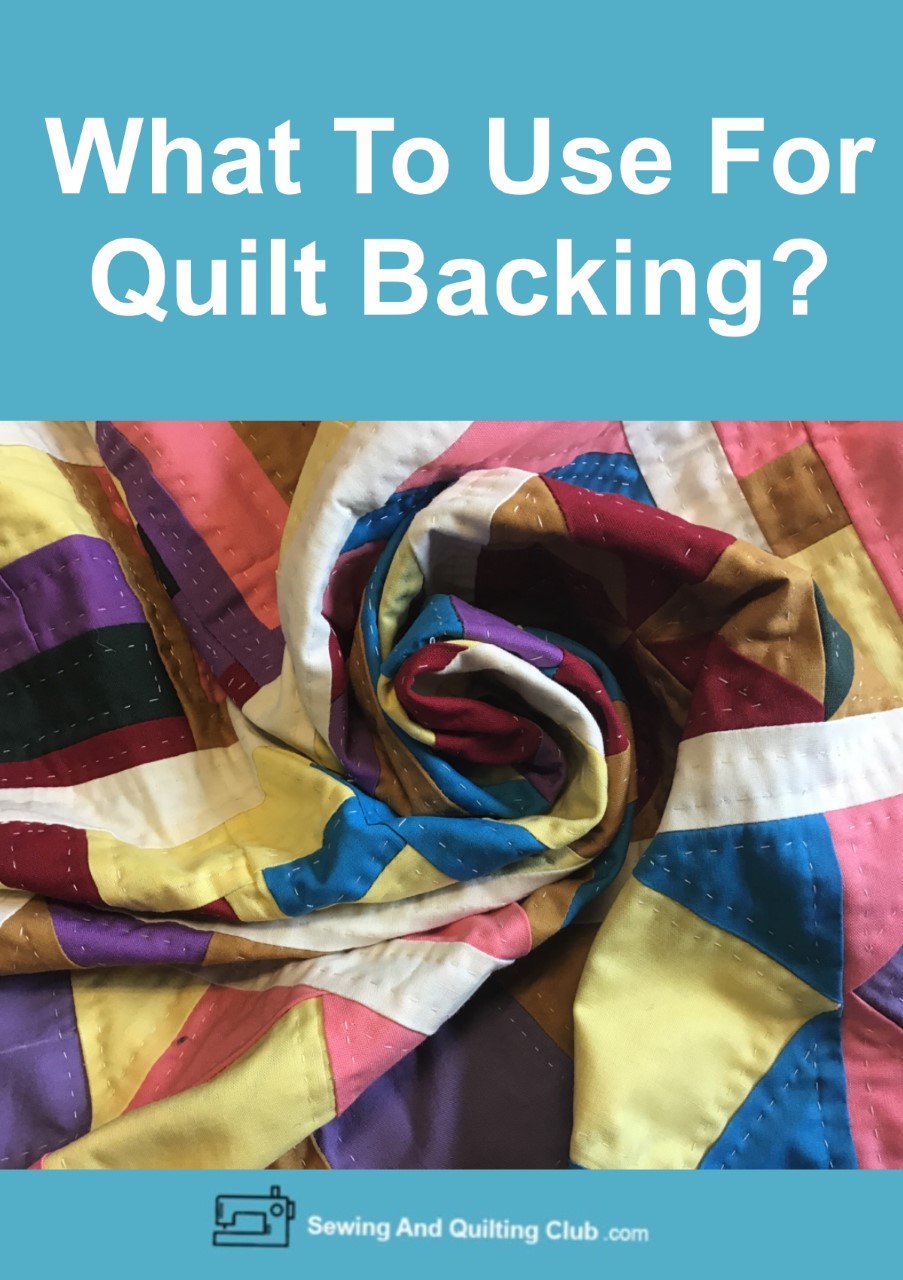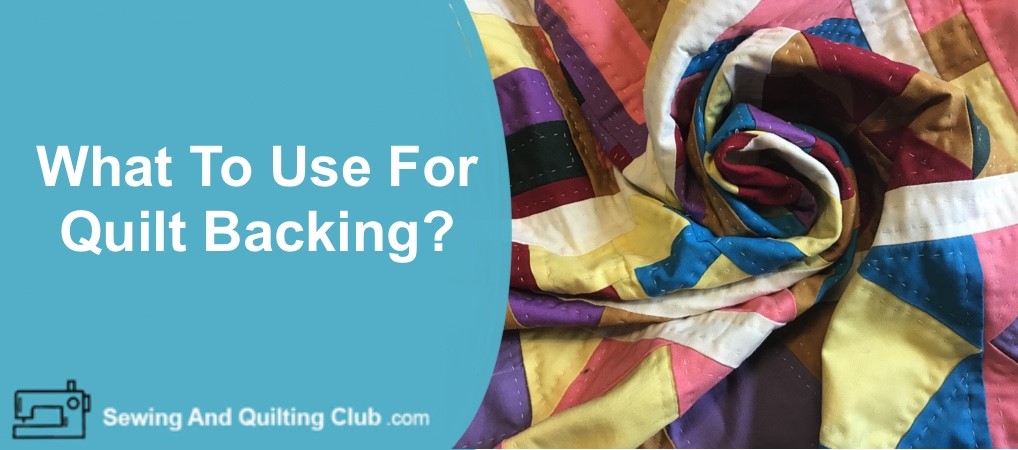When you love to make quilts, you might plan and work more on the top of your new quilt, as this side is the main side of your quilt, but the back of your quilt is important too and you might want to find a pretty fabric for it as well.
When looking to buy a fabric for your new quilt, there are a few things to keep in mind, so lets talk and learn a few things about this fabric.
What to use for quilt backing? Cotton is the most used fabric for the backing on a quilt, as this is the same textile used on the top and is easy to work, but you can find many different fabrics you can also use for the backing and it will all depend on the use of the quilt and your preferences.
What Is Quilt Backing?
Most quilts are made from three layers of textiles, the top, the batting fabric and the backing, when you turn over a quilt, the fabric on the rear is the backing.
The backing on traditional quilts used to be a piece of cotton white fabric, it could be in one piece or two or more pieces stitched together to form the backing.
Today, quilters around the world have more options to choose a fabric for the back for their new quilt. Cotton fabric in different colors or patterns can be stitched on to form the backing, and by doing this, quilters can also create a backing that is pretty enough to be used as a double face quilt.
The Best Fabric For Quilt Backing
As a quilter of many years, I like to use the same fiber or textile I’m using on the top of a quilt, cotton fabric. There are on the market some cotton fabric made for this purpose, and it can be wide enough to cover your quilt without the need of stitching two or more pieces together to make the backing.
Using a cotton fabric on the backing on your quilt has some benefits, as the textiles are the same, they will behave the same way, and it can be washed as the main fiber you use.
But in the last years, quilters around the world are using different textiles for the backing as flannel, wool, fleece or polar and even other type of fabrics like denim.
When using a different fabric for the backing on your quilt, you will need to learn the washing suggestions for the more delicate fabric on your quilt, like if you’re using wool, it will need to be washed following the instructions for the wool.
How Much Fabric Is Needed For Quilt Backing?
When it is time to work on the quilting sandwich (quilt top, batting fabric and quilt backing) you need to measure your quilt, length and width and add at least 4 inches to all sides of your quilt, this will help you to work with ease on the quilting by hand or by machine in case there is any shrinking during the quilting process.
When working on the making of the quilt backing stitching on different pieces of fabrics or a mix of fabric and quilt blocks, you also need to design the lay out of this piece keeping in mind the size of this piece according to your quilt top.
If you’re planning to send your quilt to a quilter, you need to contact her/him to ask how larger the batting fabric and the quilt backing should be, the quilter will let you know how many inches these two fabrics need to be bigger than the top for each quilt.
Can You Use Flannel For Quilt Backing?
Quilts with a backing made of flannel are called Summer Quilts, and when making the quilting sandwich, there will be only two layers of fabrics on your quilt: the top of your quilt and the flannel.
When using flannel for a quilt backing, you will need to wash and dry your flannel before you make the quilting sandwich, as flannel tends to shrink more than cotton and if you don’t take your time to wash the flannel before making the quilting sandwich, your quilt might shrink after the first wash.
I’ve been using flannel as quilt backing lately and I can say it is easy to work with as I love to do hand quilting on my quilts.
Flannel backing gives the quilt a nice and soft texture and your quilts will be light, easy to fold and storage.
The only “Con” I find when I use flannel for back quilting is that the quilting work on the back doesn’t show as much as when you use a cotton fabric for the back.
Can You Use Fleece For Quilt Backing?
Fleece or Polar fabric is another good option for a quilt backing, and many quilters around the world are using this fabric for the backing of their quilts with good results.
Fleece is a soft fabric to work with as a backing of your quilt, is easy to work the hand quilting and you’re quilting work shows up on the back.
Fleece is a soft fabric to the touch and it will keep warm your family during the cool nights,
When making a quilt for a baby, many quilters choose a fleece fabric for the backing without the need of any batting fabric, which makes it easier to work with.
Do I Need To Pre-Wash The Fabric For Quilt Backing?
As a tip to all quilters, it’s always better to pre-wash any fabric you’ll be using on your quilt, with the exception of the batting fabric, and this rule should be followed for the quilt backing too, and more when you’re using any dark color fabric, as these fabrics tend to bleed on the first wash, and this could ruin your quilt.
When you’re working with any color cotton fabric for the backing on your quilt, pre-washing this fabric will be a good idea as it can shrink before you use it.
Related:
Closing Thoughts
Quilt backing is the bottom layer on your quilt, and you can use a solid color fabric which will show better all the quilting work on your quilt, or you can use a fabric with a pattern that will look pretty as well.
There are some different fabrics today on the market to help you to choose one for your next quilt, some are already made wide enough for any regular size quilt, which will help you to buy enough fabric for your quilt, some fabrics are regular wide so you will need to cut and sew on the panels to make the piece big enough as your quilt.
Quilters around the world are making their quilts with the quilt backing on their mind as they can create beautiful quilts that can be used both ways, the top up or the backing up, as both sides are created beautiful, so it will be hard for you to choose which one you like more!
Thanks so much for reading our blog!
Happy Quilting!


